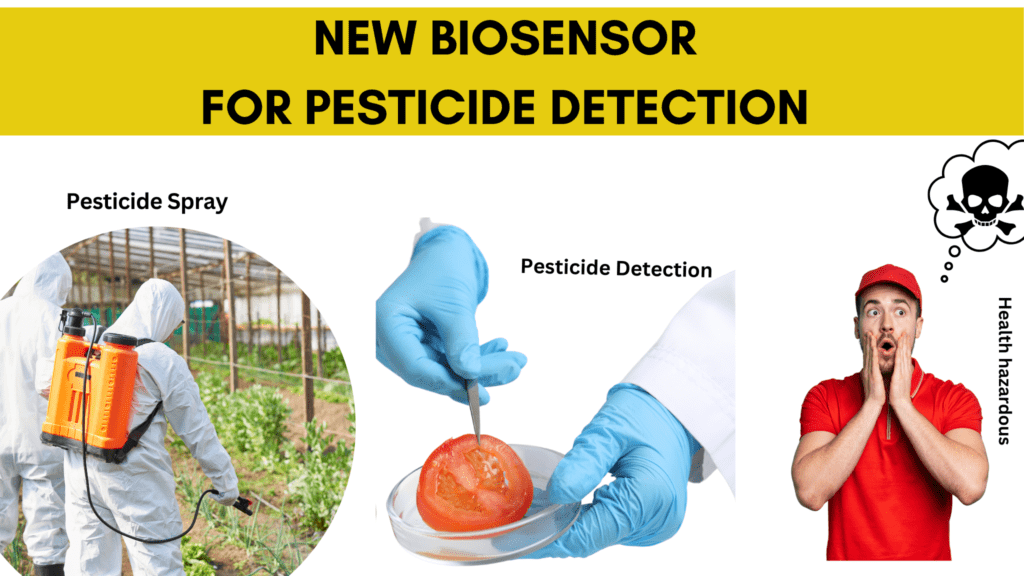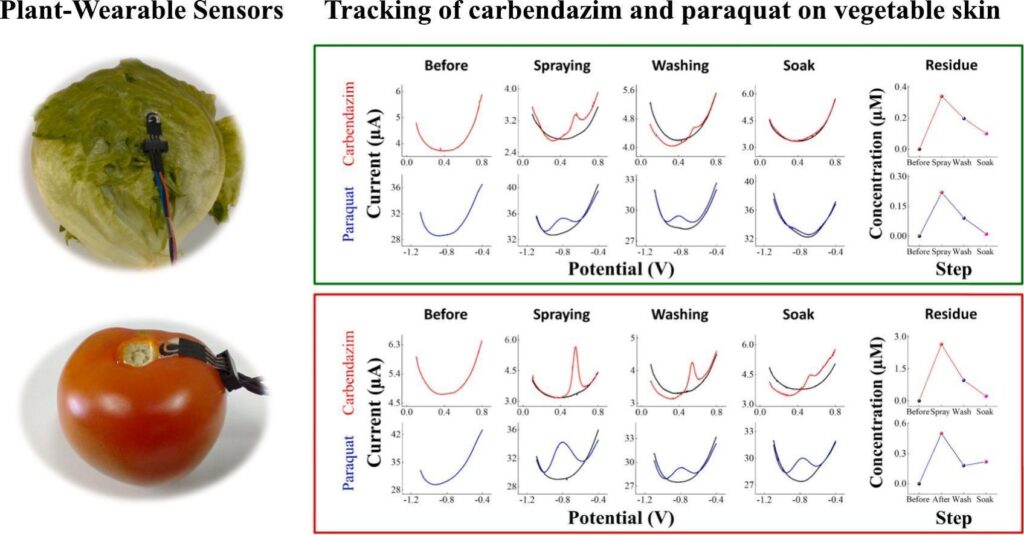Table of Contents
Importance of pesticide-free food
Pesticides are chemicals designed to control pests such as insects, weeds, and fungi, but their use can lead to unintended consequences when they enter the environment. Chronic exposure to certain pesticides has been linked to health issues such as cancer, reproductive problems, and neurological disorders. In the present context, a larger number of biosensors have been developed by different researchers to detect pesticides in different food products.


Detection of pesticides in food products
Detecting pesticide levels is crucial for several reasons, encompassing human health, environmental conservation, and sustainable agricultural practices. Biodegradable sensors are devices designed to detect specific substances or conditions, such as pesticides, and are characterized by their ability to break down naturally over time. These sensors not only enhance the safety of our food supply but also align with sustainability goals, demonstrating the potential to revolutionize the landscape of food safety monitoring in the years to come.
Currently, employed techniques to detect pesticides in food items
Presently, the pesticide residue in food products, water, and in soil was detected through standard chromatographic techniques which, required high-cost instrumentation, a time-consuming process, need highly skilled persons and based on non-degradable plastic polymers like nitrile glove, polyimide (PI), polycarbonate (PC), polydimethylsiloxane (PDMS), polyvinyl chloride (PVC), polyester (PE) and polyethylene terephthalate. The new sensor-based method can overcome above mentioned drawbacks and may be useful for large-scale analysis while maintaining environment sustainability.
New study on biosensor for pesticide detection
Recently, one study was conducted to develop sustainable biosensors for quick, easy, and low-cost detection of the level of pesticides present in food products. This biodegradable sensor was made out of cellulose acetate (CA) substrates, which can detect carbendazim and paraquat in agricultural, water, and food samples.
The study was carried out by Samiris Côcco Teixeira at Federal University of Vicosa, Brazil in collaboration with São Carlos Institute of Chemistry, University of São Paulo, and published in Journal Biomaterials Advances in December 2023.
The study was carried out on lettuce and tomato skins, and also water samples to detect carbendazim and paraquat on lettuce and tomato skins, and also water samples with no interference from other pesticides.


You can also read our latest article :
- eSoil: New Technology for the rapid growth of plant
- Banana export to Europe अब इस तकनीक से होगा केले का होगा एक्सपोर्ट, जानिए पूरी खबर
More information: Teixeira, S.C., Gomes, N.O., Calegaro, M.L., Machado, S.A., de Oliveira, T.V., Soares, N.D.F.F. and Raymundo-Pereira, P.A., 2023. Sustainable plant-wearable sensors for on-site, rapid decentralized detection of pesticides toward precision agriculture and food safety. Biomaterials Advances, 155, p.213676.
Research article link : Journal Biomaterials Advances
FAQs
What are the nano biosensors for pesticide detection?
Magnetic nanoparticles (MNPs), metallic nanomaterials, carbon nanotubes (CNTs), graphene, and its derivatives are among the commonly used nanomaterials for detecting pesticides and mycotoxins.
What is a commonly used biosensor?
Piezoelectric biosensors are of two types: the quartz crystal microbalance and the surface acoustic wave device. They are based on the measurement of changes in resonance frequency of a piezoelectric crystal due to mass changes on the crystal structure
Who is the father of biosensors?
Leland C. Clark is known as the father of Biosensors. Even the oxygen electrode is named after him, Clark electrode.
What material is used for biosensors?
The most important materials for chemical and biochemical sensors include organic polymers, sol–gel systems, and semiconductors, among other conducting composites. Potential topics: FET Biosensors. Plasmonic Biosensors.
I hope you are enjoying reading this amazing article, and you may also like our other below mentioned articles:
